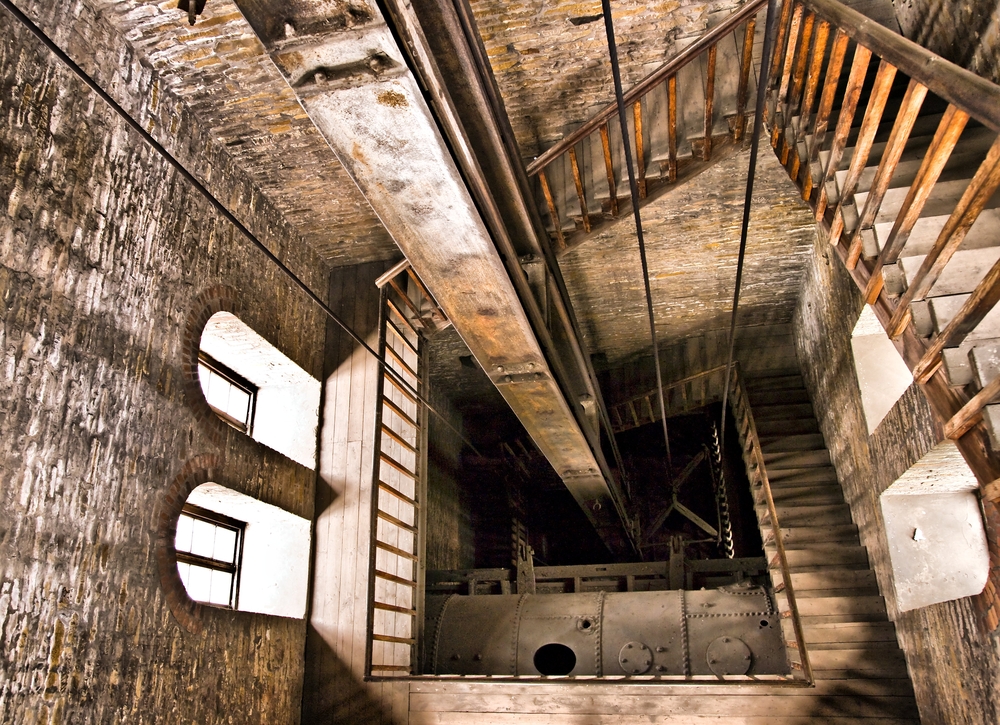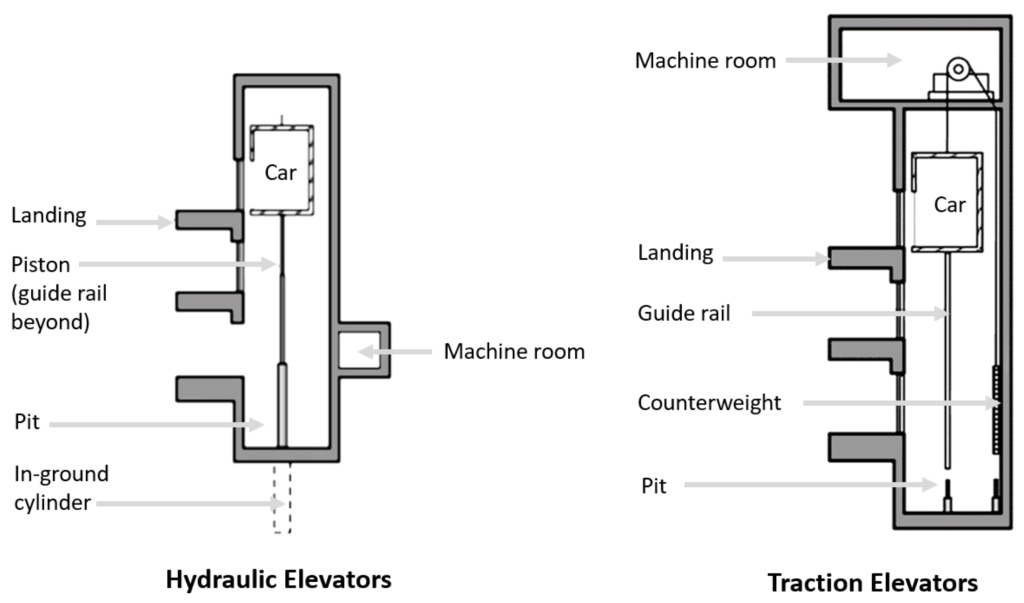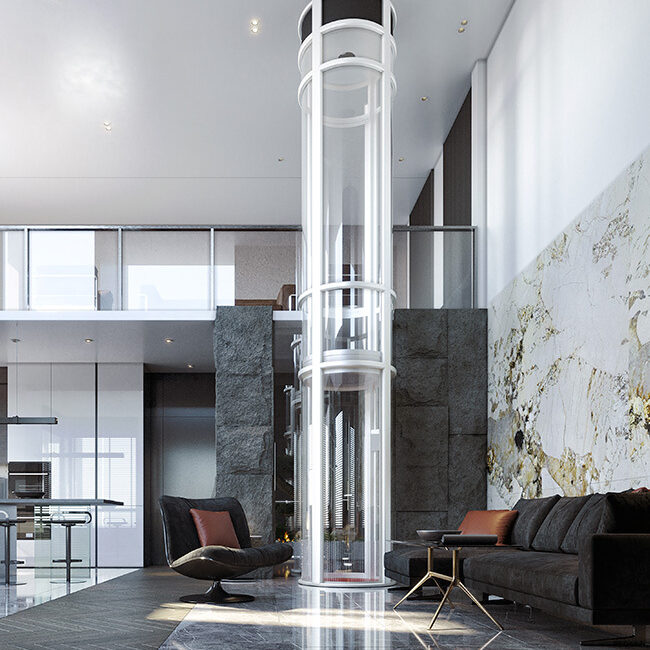Elevators: A Cornerstone of Modern Living
Elevators have become an indispensable part of the modern urban landscape, quietly revolutionizing the way we live and work. They are more than just mechanical devices; they are cornerstones of modern living, shaping the very fabric of our cities and the way we interact with built environments.
- Efficiency and Productivity: In commercial buildings, elevators play a crucial role in enhancing efficiency and productivity. They facilitate the rapid movement of employees, clients, and goods within the building, minimizing time wasted on traversing floors. This streamlined movement not only improves workflow but also contributes to a more productive and efficient workplace.
- Accessibility and Inclusion: Elevators are essential for ensuring accessibility for people with disabilities. They provide a vital means of vertical transportation for individuals who may have difficulty climbing stairs, making buildings more inclusive and accessible to all members of society.
- Urban Development: The development of elevators has been a key driver of urban growth. The invention of safe and reliable elevators in the 19th century paved the way for the construction of high-rise buildings, transforming city skylines and enabling denser urban living.
- Quality of Life: Elevators significantly enhance the quality of life for residents in multi-story buildings. They provide convenient and effortless access to different levels within a building, making daily living more comfortable and enjoyable.
- Safety and Security: Modern elevators are equipped with advanced safety features, ensuring the safety of passengers. These features include automatic door operators, emergency stop buttons, and overload protection systems, minimizing the risk of accidents.
In essence, elevators are more than just mechanical devices; they are integral to the functioning of modern society. They enhance efficiency, improve accessibility, drive urban development, and contribute to a higher quality of life. As technology continues to advance, we can expect even more innovative and sophisticated elevator solutions to emerge, further shaping the urban landscape and our interactions with the built environment.
I hope this expanded explanation provides a more comprehensive understanding of the significance of elevators in modern living!
A Brief History of Elevators: From Ancient Origins to Modern Marvels
The concept of vertical transportation has been a human endeavor for millennia. Long before the sleek, automated elevators we know today, ingenious minds sought ways to conquer the vertical dimension.
Early Inventions:
- Ancient Civilizations: Evidence suggests that early civilizations like the Romans and Egyptians utilized basic lifting mechanisms. These often involved simple hoists and ropes, primarily for construction purposes, such as moving heavy building materials to higher levels.
- Medieval Europe: During the medieval period, rudimentary elevators, often powered by hand cranks or pulleys, were used in castles and monasteries. These early devices were primarily for transporting goods and supplies, rather than passengers.
The Birth of the Modern Elevator:
The true turning point in elevator history came in the 19th century with the Industrial Revolution. This era witnessed a surge in technological advancements, including:
- The Safety Brake: In 1852, Elisha Otis, an American inventor, developed a crucial safety device that prevented the elevator car from plummeting in case of cable failure. This breakthrough, known as the “safety brake,” instilled public confidence in elevator technology and paved the way for widespread adoption.
- The First Passenger Elevator: In 1857, Otis installed the world’s first commercially successful passenger elevator at the Haughwout Department Store in New York City. This steam-powered elevator could transport passengers between five floors, marking a significant milestone in vertical transportation.

The Rise of Skyscrapers:
The invention of the safe and reliable passenger elevator had a profound impact on urban development. It enabled the construction of taller and taller buildings, ushering in the era of skyscrapers. As cities grew vertically, elevators became indispensable for daily life, facilitating efficient movement within these towering structures.
Continuous Innovation:
Throughout the 20th and 21st centuries, elevator technology has continued to evolve. Advancements in materials, electronics, and computer science have led to:
- Higher Speeds and Capacities: Modern elevators can travel at much faster speeds and accommodate larger numbers of passengers, improving efficiency and convenience.
- Improved Safety Features: Sophisticated safety systems, including automatic door controls, emergency brakes, and fire-resistant materials, ensure passenger safety.
- Energy Efficiency: Innovations like regenerative braking systems and energy-saving lighting contribute to more sustainable elevator operation.
- Accessibility: Elevators are now designed with accessibility in mind, incorporating features like wider cabins and Braille controls to accommodate people with disabilities.
The Future of Elevators:
As technology continues to advance, we can expect even more innovative elevator solutions in the future. These may include:
- Autonomous Elevators: Elevators that can anticipate passenger needs and optimize routes for maximum efficiency.
- Integration with Smart Building Technologies: Elevators that can seamlessly integrate with other building systems, such as security and energy management.
- Sustainable Materials and Designs: Elevators constructed with eco-friendly materials and powered by renewable energy sources.
The history of elevators is a testament to human ingenuity and the relentless pursuit of solutions to overcome physical limitations. From ancient lifting devices to the sophisticated systems of today, elevators have played a crucial role in shaping our modern world, transforming the way we live, work, and interact with our urban environments.
Understanding Elevator Technology
Today’s elevators are sophisticated machines that rely on a complex interplay of mechanical, electrical, and control systems to ensure safe and efficient vertical transportation.
- Drive System:
- This is the heart of the elevator, responsible for generating the power to move the car.
- Hydraulic Drives: These utilize hydraulic fluid to push a piston, lifting the elevator car. They are generally quieter and smoother than traction drives, making them suitable for low-rise buildings.
- Traction Drives: These use electric motors to rotate a sheave (pulley) that winds steel cables attached to the elevator car and a counterweight. Traction drives are more common in high-rise buildings as they offer higher speeds and greater travel distances.
- Hoisting Mechanism:
- This system is responsible for the actual lifting of the elevator car.
- Wire Ropes: In traction drives, strong steel cables are used to connect the elevator car to the sheave.
- Piston: In hydraulic drives, a powerful piston is used to lift the elevator car.
- Belts: Some modern elevators utilize belts instead of cables for a smoother and quieter ride.
- This system is responsible for the actual lifting of the elevator car.
- Car and Counterweight:
- The elevator car is where passengers or goods are transported.
- The counterweight is a heavy weight that moves in the opposite direction of the car. This counterweight significantly reduces the energy required to move the elevator, as the motor only needs to overcome the difference in weight between the car and the counterweight.
- Control System:
- This is the “brain” of the elevator, responsible for managing all its operations. It incorporates:
- Microprocessors: These powerful microprocessors control the elevator’s movements, monitor safety systems, and respond to passenger requests.
- Sensors: Various sensors monitor elevator position, speed, door status, and other critical parameters.
- Safety Devices: The control system incorporates numerous safety features, such as:
- Overload protection: Prevents the elevator from exceeding its weight capacity.
- Emergency stop buttons: Allow passengers to halt the elevator in case of an emergency.
- Speed governors: Prevent the elevator from exceeding safe operating speeds.
- Buffers: Safety devices at the bottom of the shaft to cushion the impact in case of a freefall.
- This is the “brain” of the elevator, responsible for managing all its operations. It incorporates:
This intricate interplay of components ensures that elevators operate smoothly, safely, and efficiently, providing a vital service in our modern world.
READ MORE: ELEVATOR MAINTENANCE TIPS>>>

Types of Elevators: Choosing the Perfect Fit
The Nigerian elevator market offers a diverse range of elevator solutions to cater to various needs and applications. Here’s a closer look at the most common types:
Passenger Elevators:
- Designed for transporting people in residential, commercial, and public buildings.
- They come in a wide array of capacities, speeds, and configurations to suit different building requirements.
- Key Considerations:
- Passenger Volume: How many people need to be transported simultaneously?
- Building Height: Number of floors the elevator needs to serve.
- Speed Requirements: How quickly do passengers need to reach their destination?
- Aesthetics: Elevator design should complement the building’s overall aesthetics.
- Common Types of Passenger Elevators:
- Hydraulic Elevators:
- Utilize: A hydraulic piston system to lift the car.
- Characteristics: Smooth and quiet operation, relatively low initial cost.
- Ideal for: Low-rise to mid-rise buildings.
- Limitations: Slower speeds compared to traction elevators, limited travel distance.
- Traction Elevators:
- Employ: Electric motors and hoisting ropes to move the car.
- Characteristics: Higher speeds and greater travel distances, suitable for high-rise buildings.
- Types:
- Gearless Traction Elevators: Offer high speeds, smooth operation, and energy efficiency.
- Geared Traction Elevators: More cost-effective than gearless traction elevators.
- Machine Room Less (MRL) Elevators:
- Compact design: Eliminates the need for a separate machine room.
- Benefits: Maximizes usable space within the building, ideal for retrofitting existing structures.
- Suitable for: Mid-rise buildings and those with limited space for a traditional machine room.
- Vacuum Elevators:
- Operate: Using air pressure to move the car vertically.
- Characteristics: Sleek design, energy-efficient, and environmentally friendly.
- Ideal for: Residential buildings and low-rise structures.
- Benefits: Easy installation, minimal maintenance, and no need for a machine room or hoist way.

Freight Elevators:
- Built for heavy-duty applications, designed to transport goods and materials in warehouses, industrial facilities, and parking garages.
- Key Characteristics:
- Larger capacities and load-bearing capabilities compared to passenger elevators.
- Robust construction to withstand the demands of heavy-duty use.
- Customization options to suit specific cargo requirements (e.g., size, weight, handling).
- Types:
- Standard Freight Elevators: Designed for general freight transportation.
- High-Rise Freight Elevators: For transporting heavy loads in tall buildings.
- Automotive Lifts: Specifically designed for transporting vehicles in parking garages.
Factors that influence the choice of elevator type:
- Building Type and Usage: Residential, commercial, industrial, healthcare, etc.
- Passenger/Freight Traffic: Volume and characteristics of the traffic.
- Building Height and Number of Floors:
- Available Space: For the elevator shaft, machine room (if required), and other components.
- Budgetary Constraints: Cost of purchase, installation, and ongoing maintenance.
- Safety and Accessibility Requirements: Compliance with Nigerian building codes and accessibility standards.
By carefully considering these factors, building owners and developers can select the most appropriate elevator solution to meet their specific needs and enhance the functionality and value of their property.
I hope this expanded explanation provides a more comprehensive overview of elevator types available in the Nigerian market.
Machine Room Less (MRL) Freight Elevators:
- Space-saving innovation: These elevators are designed with the machinery integrated within the hoistway, eliminating the need for a separate machine room.
- Ideal for: Buildings with limited space, such as older buildings or those with unique architectural constraints.
- Benefits:
- Maximize usable floor space.
- Reduce construction costs by minimizing the need for extra space.
- Easier to install in existing buildings.
- Applications: Suitable for transporting goods in various settings like warehouses, factories, and multi-story commercial buildings.
Home Elevators:
- Addressing accessibility needs: Home elevators are becoming increasingly popular, providing convenience and accessibility for residents of all ages and abilities.
- Variety of options: Available in various sizes, configurations, and styles to suit different home designs and requirements.
- Key Types:
- Pneumatic Vacuum Elevators:
- Utilize compressed air to create a vacuum, lifting the car.
- Characteristics: Compact and space-saving, suitable for retrofitting existing homes.
- Limitations: Can have limited travel distances.
- Residential Hydraulic Elevators:
- Employ a hydraulic piston system for smooth and quiet operation.
- Ideal for: Low-rise homes with limited space.
- Residential Traction Elevators:
- Offer a more affordable option for taller homes compared to hydraulic models.
- Pneumatic Vacuum Elevators:
Other Elevator Types:
- Dumbwaiters:
- Small, compact elevators designed for transporting small items like food, dishes, or medical supplies between floors.
- Ideal for: Restaurants, hospitals, and other facilities where frequent small item transfers are required.
- Escalators:
- Moving staircases that provide continuous uphill or downhill transportation.
- Commonly used in: Shopping malls, airports, subways, and other high-traffic areas.
- Benefits: High passenger capacity, efficient movement of large crowds.
Factors to Consider When Choosing an Elevator
Selecting the right elevator involves careful consideration of several critical factors:
- Building Type and Usage:
- Residential: Apartments, condominiums, single-family homes.
- Commercial: Office buildings, retail stores, hotels, hospitals.
- Industrial: Warehouses, factories, manufacturing plants.
- Public: Schools, libraries, government buildings.
- Traffic Patterns: Passenger volume, peak hours, and expected freight loads.
- Capacity and Weight Requirements:
- Passenger Elevators: Maximum number of passengers, weight capacity.
- Freight Elevators: Weight capacity, dimensions of the largest items to be transported.
- Travel Distance and Speed:
- Number of floors served:
- Desired speed of travel: Faster speeds are generally preferred for high-rise buildings.
- Available Space:
- Shaft size: Must be adequate for the elevator car and counterweight.
- Machine room space: If required.
- Pit depth: Space below ground level for elevator components.
- Budgetary Constraints:
- Purchase price: Varies significantly based on elevator type, features, and manufacturer.
- Installation costs: Include labor, materials, and permits.
- Maintenance costs: Ongoing maintenance contracts are essential for ensuring safe and reliable operation.
- Aesthetics and Design:
- Cab interiors: Materials, finishes, lighting, and other design elements.
- Exterior finishes: Should complement the building’s architectural style.
- Safety Features:
- Compliance with Nigerian safety regulations: Essential for legal operation and passenger safety.
- Safety devices:
- Automatic door operators
- Emergency stop buttons
- Overload protection
- Speed governors
- Buffers
- Fire safety features
By carefully considering these factors and working with experienced elevator companies like us, you can select the most suitable and cost-effective elevator solution for your specific needs.
Enhance your home’s accessibility and elegance with PE Lifts’ state-of-the-art home elevators. Our TÜV SÜD certified lifts offer a 360° panoramic glass view and can be installed seamlessly within 48 hours.
Contact us today to discover the perfect elevator solution for your home:
- Address: F14, House 4, CITEC Estate Mbora, Jabi, Abuja
- Phone: +234 810 421 6126 / +234 702 521 1116
- Email: contactnigeria@pelifts.com
Don’t miss out on elevating your home experience with PE Lifts!

